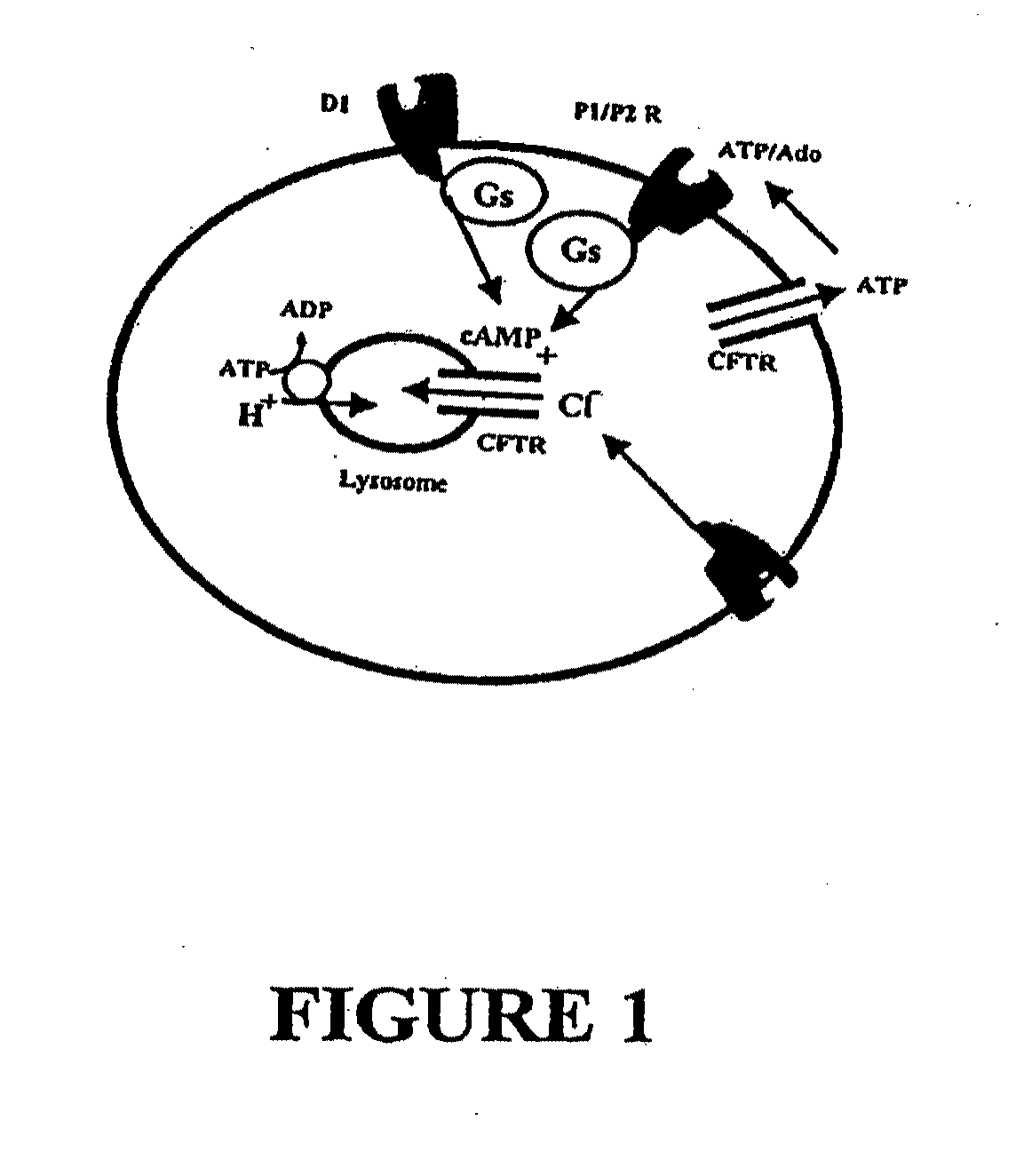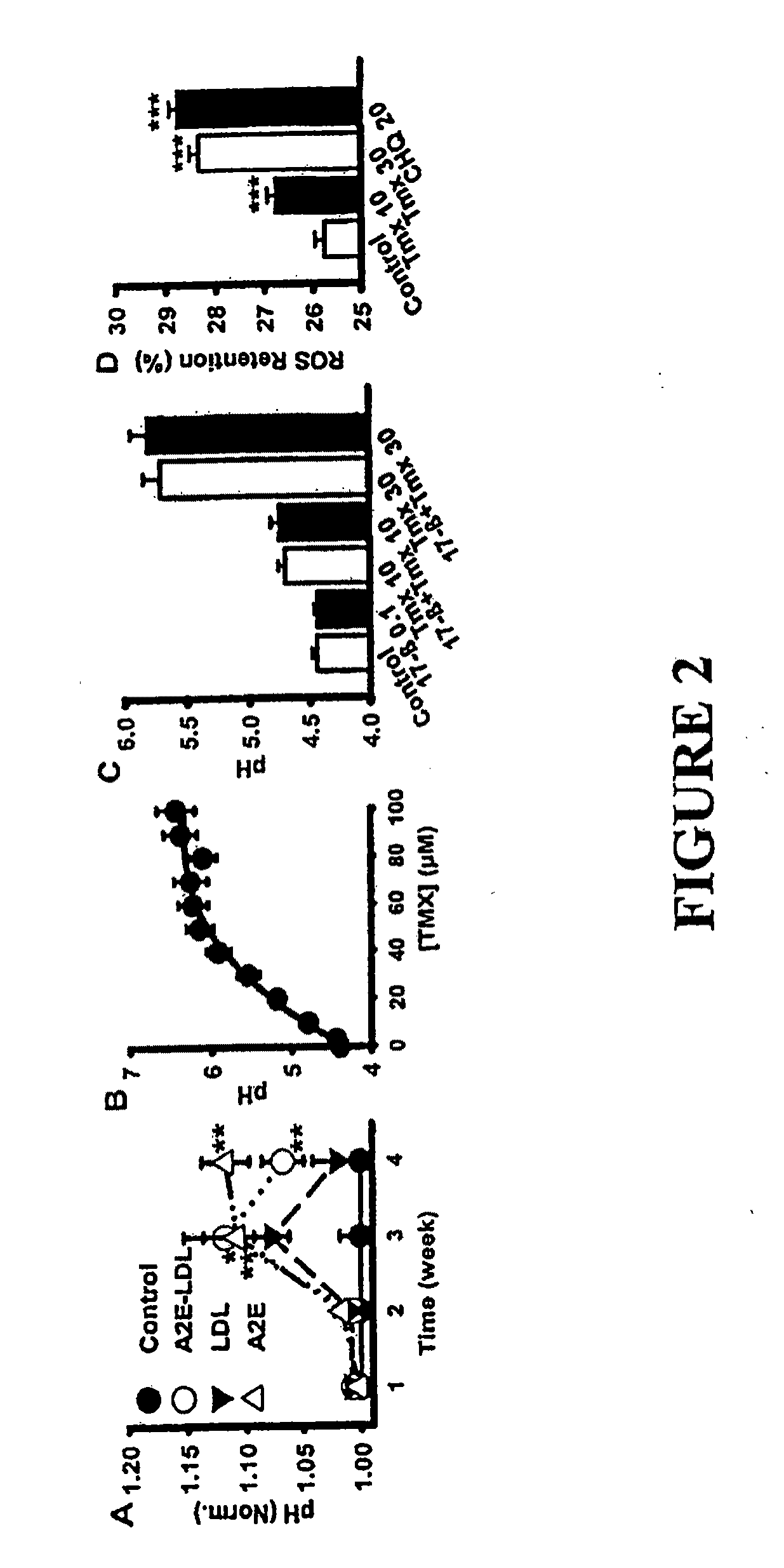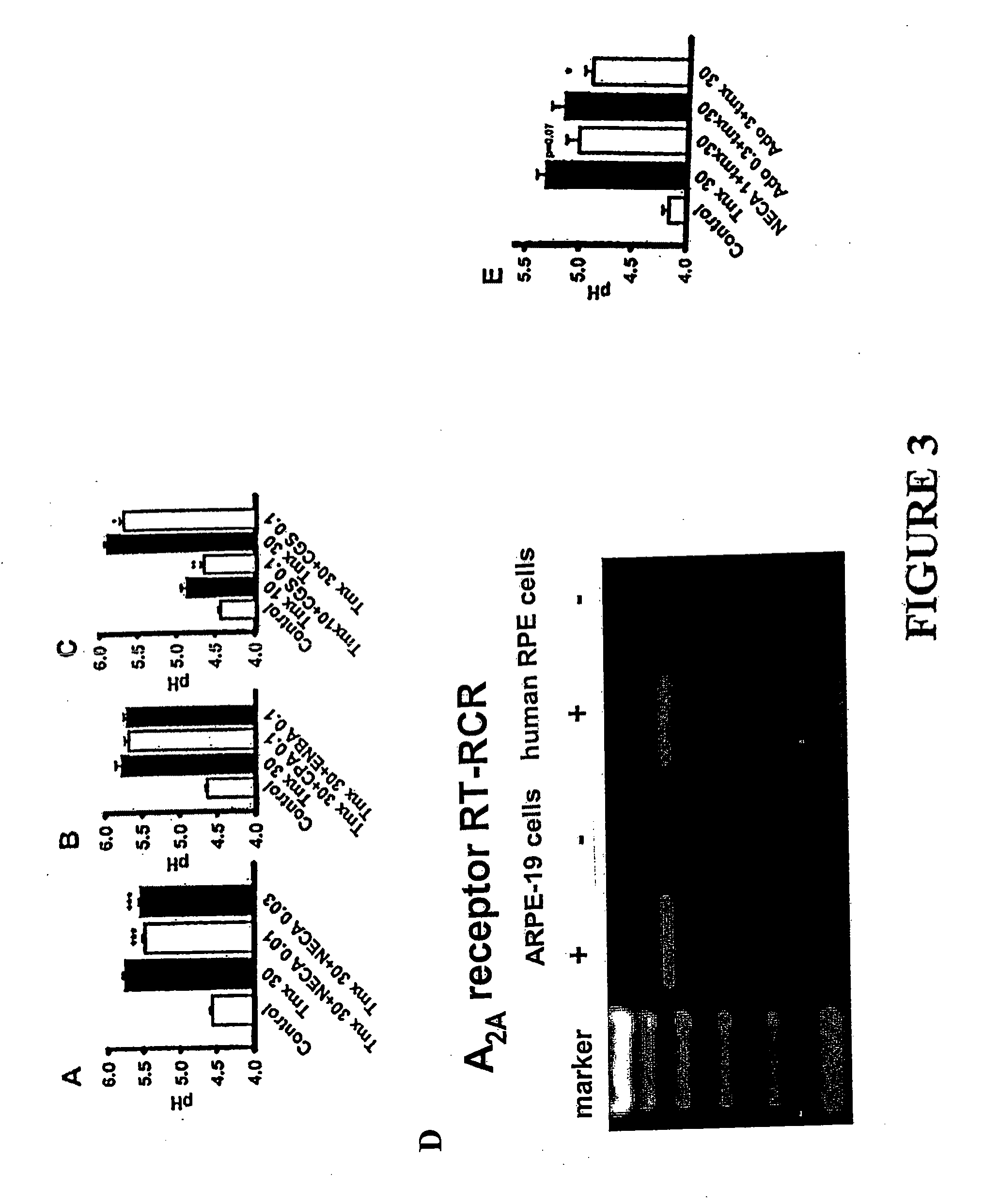Method for Treatment of Macular Degeneration
a technology for macular degeneration and treatment, applied in the field of macular degeneration, to achieve the effects of slowing the progression of amd, increasing the activity of degradative enzymes, and lowering lysosomal ph
- Summary
- Abstract
- Description
- Claims
- Application Information
AI Technical Summary
Benefits of technology
Problems solved by technology
Method used
Image
Examples
example 1
Identification of Receptors that Lower pHL in Bovine and Human RPE Cells
[0101]Data has shown that the A2A adenosine and P2Y11 receptors linked to Gs lower pHL. To test whether pharmacologic manipulation could restore a perturbed lysosomal pH and enhance degradative ability in RPE cells, requires (i) definitively identifying receptors involved in lysosomal acidification, (ii) determining whether compounds found to decrease pHL in cells treated with tamoxifen are effective against A2E, and (iii) assess whether the identified compounds can restore rates of outer segment degradation. The characterization of the receptors is performed on cells treated with tamoxifen since it requires only 15 minutes to modify pHL.
[0102]In general, each condition below used 3-12 independent wells per plate, in 3-6 separate plates. As levels from individual plates varied, data was normalized to the mean pHL for control wells from each plate. Fluorescent ratios were converted to pH following calibration per...
example 2
Pharmacological Restoration of Lysosomal pH Increased by A2E
[0106]To demonstrate that agonists that were effective with tamoxifen also lower pHL in cells treated with A2E, basic protocols used to generate preliminary data were expanded to show the effect of acidifying drugs on ARPE-19 cells exposed to A2E. Cells were challenged with 14 nM A2E (LDL-free) for 4 weeks based on the results of FIG. 2A. Two treatment strategies were employed. First, putative acidifying compounds were applied to cells once after 4 weeks of loading with A2E, and measurements were made 15 min. later, as was done for tamoxifen. This mimics treatment of a patient with a pre-existing A2E accumulation. While A2E is likely to be retained in lysosomes once accumulated (Sparrow et al., supra, 2005; Mata et al., supra, 2000), the ability to degrade additional outer segment material may depend more closely on enzyme activity, and thus, on lysosomal pH. Secondly, acidifying compounds were given with A2E for 4 weeks an...
example 3
Effect of Lysosomal Acidification on Clearance of Photoreceptor Outer Segments
[0111]To show that lowering pHL increased the clearance of outer segments, an approach was designed based upon the findings shown in FIG. 2, wherein tamoxifen and chloroquine slowed the clearance of outer segments. This also showed whether drugs capable of lowering lysosomal pH, also enhance clearance of outer segments. In addition, this experiment provided a second methodology to assess the effectiveness of the compounds identified above.
[0112]The primary lysosomal enzymes in RPE cells function optimally in acidic environments, and compounds that alkalinize lysosomes can slow the degradation of outer segments and enhance accumulation of undigested material. Because this accumulation appeared to be a key step in the development and accumulation of lipofuscin, the ability of acidifying drugs to also restore rates of outer segment clearance was central to the potential of a drug. This is particularly importa...
PUM
| Property | Measurement | Unit |
|---|---|---|
| pH | aaaaa | aaaaa |
| time | aaaaa | aaaaa |
| mole fraction | aaaaa | aaaaa |
Abstract
Description
Claims
Application Information
 Login to View More
Login to View More - R&D
- Intellectual Property
- Life Sciences
- Materials
- Tech Scout
- Unparalleled Data Quality
- Higher Quality Content
- 60% Fewer Hallucinations
Browse by: Latest US Patents, China's latest patents, Technical Efficacy Thesaurus, Application Domain, Technology Topic, Popular Technical Reports.
© 2025 PatSnap. All rights reserved.Legal|Privacy policy|Modern Slavery Act Transparency Statement|Sitemap|About US| Contact US: help@patsnap.com



